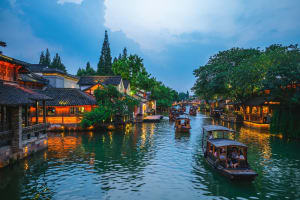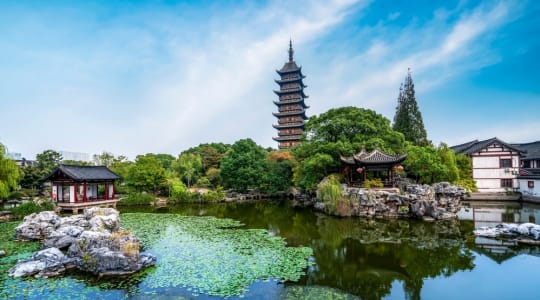The Classical Gardens of Suzhou are a group of gardens located in the city of Suzhou in the Jiangsu province of China. They were built over a period of more than 1,000 years, from the 6th century to the 19th century, and represent the pinnacle of traditional Chinese garden design.
There are nine classical gardens in Suzhou that have been designated as UNESCO World Heritage Sites, including the Humble Administrator's Garden, the Lingering Garden, the Master of the Nets Garden, the Mountain Villa with Embracing Beauty, the Canglang Pavilion, the Lion Grove Garden, the Garden of Cultivation, the Retreat and Reflection Garden, and the Couple's Garden Retreat.
These gardens were created by scholars, officials, and wealthy merchants over the centuries as places of relaxation, contemplation, and artistic expression. They typically feature a central pond or lake, surrounded by rock formations, pavilions, bridges, and plants arranged in intricate patterns. The gardens are designed to provide a sense of harmony and balance between nature and man-made structures.
The Humble Administrator's Garden is the largest and most famous of the Suzhou gardens, covering an area of 5.2 hectares. It was first built during the Ming Dynasty (1368-1644) and has undergone numerous renovations over the centuries. The Lingering Garden is another notable example, featuring a man-made mountain, a pond, and several halls and pavilions. The Garden of Cultivation is known for its small size and intimate atmosphere, while the Retreat and Reflection Garden is famous for its maze-like design.
Visitors to Suzhou can explore these classical gardens and gain insight into traditional Chinese culture and aesthetics. The gardens offer a peaceful retreat from the bustling city and are a popular destination for both domestic and international tourists.
Explore Near Classical Gardens of Suzhou
Discover 3 attractions, 5 cities, and 1 airport within 75km. Perfect for planning day trips, finding connecting flights, or discovering new destinations to explore during your visit.
Nearby Attractions & Places to Visit
3 destinations within 16.2km - 63.9km from your location



Nearby Cities Worth Exploring
5 destinations within 9.4km - 45.9km from your location
Airports Near Classical Gardens of Suzhou
1 destination within 19.9km from your location
Cross-Border Adventures Near Classical Gardens of Suzhou
Discover cross-border adventures near Classical Gardens of Suzhou. Explore neighboring countries with similar attractions and extend your travel experience across borders.








And 8 more neighboring countries
